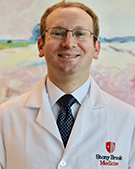A Tale of Two Fellows: Academic Medicine vs. Private Practice

The decision between joining an academic setting vs. private practice is often debated among medical trainees across fields, and cardiology is no exception. Fellows who are faced with this decision are often advised to weigh the benefits and challenges before choosing which career path to pursue.
I sat down with two recent graduates, one of whom works in private practice and the other in academia, to discuss their current careers. Jeremy Fertel, MD, is a general cardiologist working in private practice at Heart Associates of Long Island, and Tahmid Rahman, MD, is a first-year assistant professor of cardiology at Stony Brook University. They shared their insights regarding the choice between private practice and academia, mentorship and making the transition from fellow to attending.
On private practice vs. academic medicine
Rahman made the choice between academic and private practice long before starting his cardiology fellowship. “I always wanted to do academics because you're heavily involved in the teaching aspect of it, and I enjoy my job most when I get to teach, mentor, and watch my students and house staff grow.”
He also felt that the choice of becoming an academic cardiologist would help him build on his experiences and further his career goals. “I’m very excited about getting involved with some clinical trials, especially with my focus on lipidology. There are a lot of private clinical lipidologists, but I feel like to have the full fruits of lipidology I should be at an academic program where I can get involved in clinical trials and have the opportunity to create a program like the Center for Advanced Lipid Management.”
For Fertel, there was not such a huge difference between joining a private practice group or staying on as faculty. Instead, he was looking to find an established practice with colleagues he felt comfortable working with and covering for, and who would help him cultivate a strong clinical practice. “My career goal is to establish myself as somebody that people want to see.”
Fertel also noted that private practice has not prevented him from interacting with residents and fellows, especially when rounding on his private practice patients in the cardiac critical care unit. “The line separating academia and private practice has become progressively blurred. Most private groups now are actually part of a captive structure, where they are partnered with larger hospital networks that are often tertiary academic institutions.”
On mentorship and finding the best fit
Rahman feels that staying on as an attending at an academic center could lend itself to a greater breadth of mentorship opportunities. He added that by staying in an academic setting, he would have the advantage of being able to approach multiple different facets of cardiology – whether it be an EP attending, an interventional attending, heart failure attending or an echo attending – for different ideas.
Regardless of setting, both physicians found mentorship to be important to career development. Fertel said his best mentors worked in both private practice and the academic hospital setting, so they were helpful in talking and guiding him between both worlds.
On transitioning from fellow to attending
Rahman and Fertel expressed similar sentiments about the transition from fellow to attending. Rahman said the first hurdle is “how many more patients you’re seeing in the outpatient setting right away, how many more messages that you have to deal with…as well as how many more results you have to follow up on for all the orders that you put in.” He noted that the first six months will be about getting your clinical practice skills up and getting comfortable with your efficiency.
Fertel’s experience in private practice was comparable: “A little over 50% of my practice is outpatient. So, I'm now going from half a day to the equivalent of three full days. You're increasing the number of patients you are seeing by at least six, if not more. So, it's a much bigger workflow to adjust to.”
Final lessons
Regardless which path you choose, Fertel said some factors can be out of a fellow’s control. “Sometimes things are just about timing – and timing was probably a big part of both of our jobs. They just happened to have openings at the time we were graduating, and that's not always the case.”
Rahman recommended not getting too caught up in the binary of private practice vs. academics, and to consider other options like the VA and locums. “Look into all the opportunities and just see what fits you best.”
Prior to choosing a path, one should reflect on their goals and objectives and consider how each path provides the optimal opportunities to advance those goals at each career milestone. Most importantly, some of our greatest resources as FITs are our co-fellows and attendings, who are an excellent source of wisdom and offer fantastic mentorship potential. As such, we should leverage their collective experience to guide us in our future careers.
This article was authored by Mark Jacobs, MD, a fellow at Stony Brook Medicine.
This content was developed independently from the content developed for ACC.org. This content was not reviewed by the American College of Cardiology (ACC) for medical accuracy and the content is provided on an "as is" basis. Inclusion on ACC.org does not constitute a guarantee or endorsement by the ACC and ACC makes no warranty that the content is accurate, complete or error-free. The content is not a substitute for personalized medical advice and is not intended to be used as the sole basis for making individualized medical or health-related decisions. Statements or opinions expressed in this content reflect the views of the authors and do not reflect the official policy of ACC.
